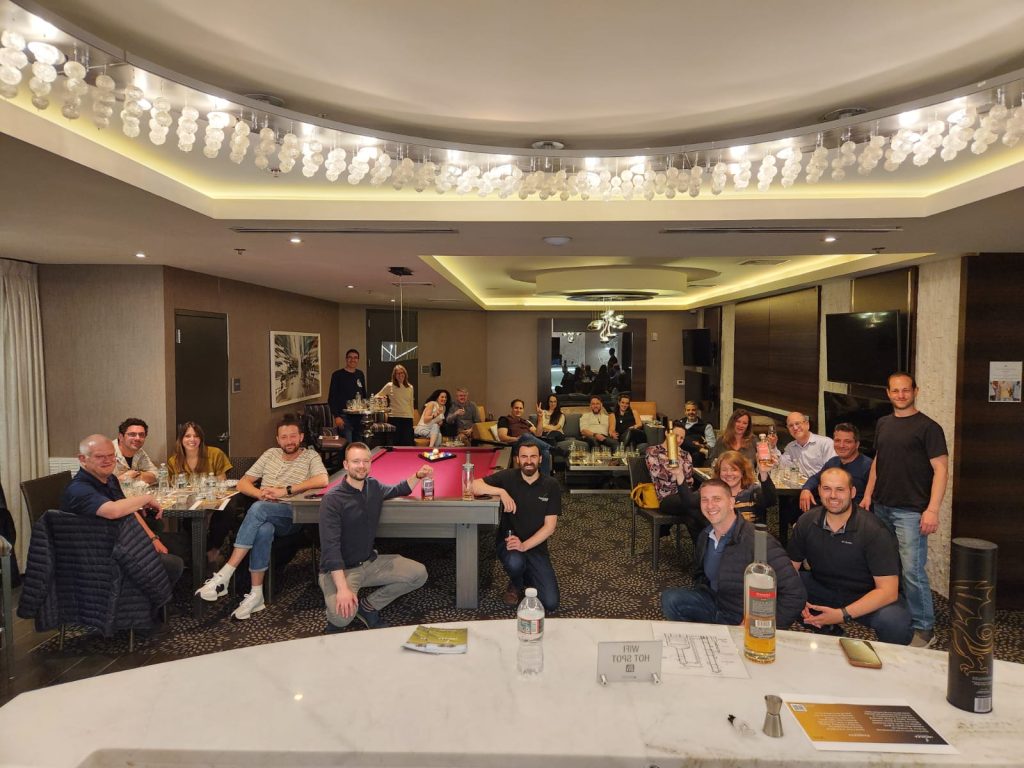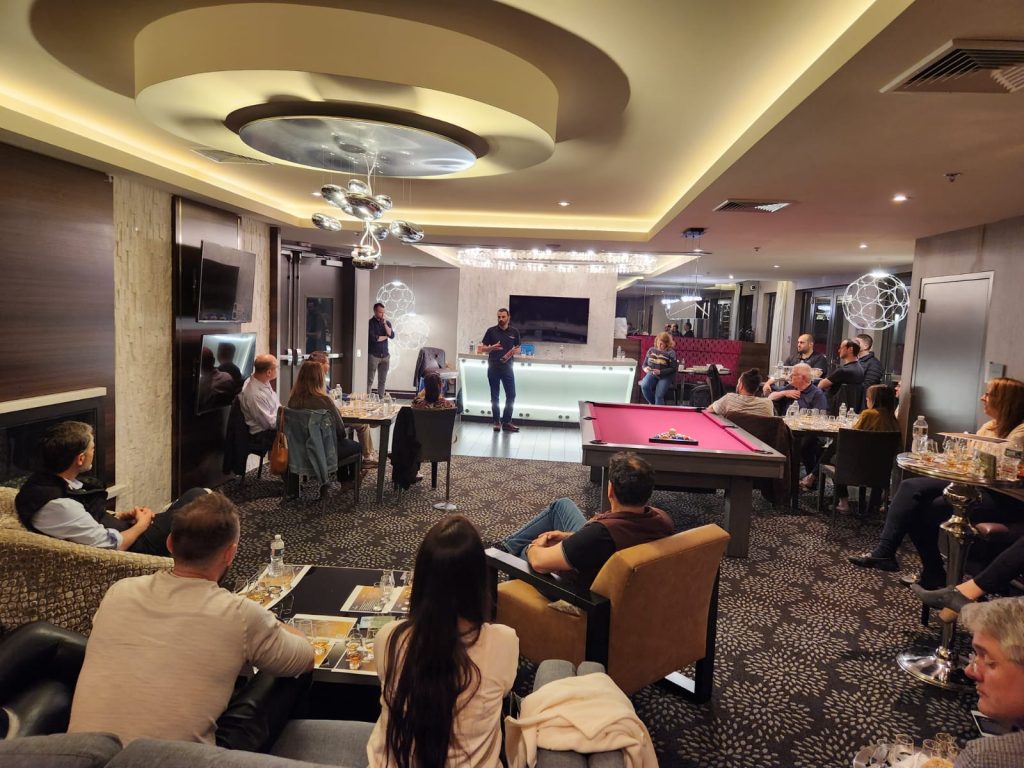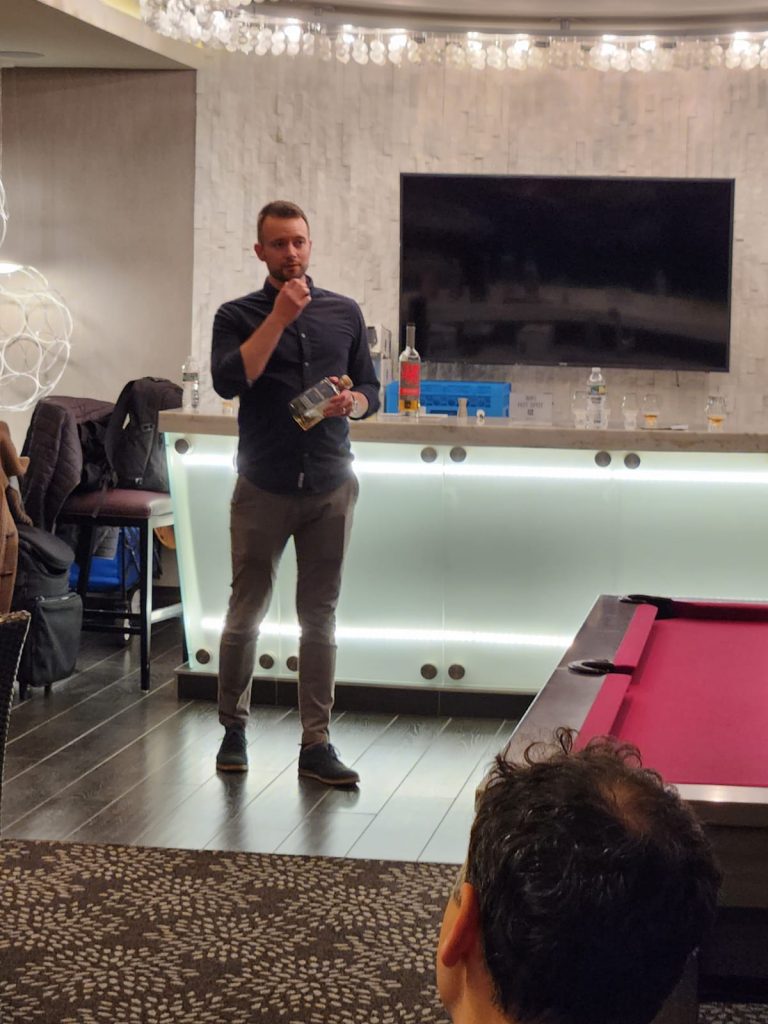Listen, the beauty of these experiences is that we are all tabula rasa. We don’t know or understand the reputation of a distillery or a particular region in Scotland. We come to taste, and it was simply wonderful. The two Davids were fantastic speakers. They weren’t overwhelming or theatrical. They spoke simply and on our level, which in itself touched and connected with us. So, what did we have there?

Lochlea: We tasted three expressions: Our Barley, Fallow, and Harvest. The story of Lochlea is pretty cool. It’s a young distillery near the coast, family-owned, with two aging warehouses and 50 casks. They have 4-6 main expressions, and what’s special is that John Campbell (!!) is in charge of overall management. Yes, the same John Campbell behind Cairdeas! It didn’t destroy me at all to hear that. What does a man who led one of the biggest whisky monsters in the world, the top of peat, do managing a tiny family-owned distillery in the Lowlands? It’s like a 180-degree shift. The story is “farm to bottle,” with barley they grow themselves and sustainability processes they implement. They claim they don’t aim for high volume but for good quality. They know they are young and at the beginning of their journey, and they know John Campbell is by their side. And let’s face it, we all want John Campbell by our side!
The expression most people loved was Our Barley, which is a 46% single malt involving STR, bourbon, and sherry casks. It was the first we tasted. The nose was quite weak, and on the palate, you could tell it wasn’t an old whisky; it had more new-make characteristics than cask presence. Following that, they liked Harvest, the second of the four annual releases. It’s a combination of port, oloroso, and bourbon casks, making it sweeter. Also 46%, but with a bitter finish and less character than the first, with noticeable wine coating. The third we tasted was Fallow, entirely oloroso-aged, and it was what you’d call the crowd favorite, sweet and tasty. Among the three, our group preferred Our Barley, followed by Harvest. I think it was clear that the expressions are young and a stepping stone in their development, and we, along with the distillery, are eager to see where it goes. The humility, honesty, and desire to be the best were the most captivating aspects of their story.

Penderyn: Next, we tasted Penderyn, which was less bold and more suited to general tastes, leading to many orders by the end of the evening. Penderyn comes from Wales. What distinguishes Welsh whisky? It was an interesting discussion because Welsh whisky is still struggling to define itself. Currently, there’s no specific characteristic apart from the three-year minimum aging, which is a general European law. If you distill, age, and bottle in London, you can still call it Welsh whisky. Definitions of location, cask, and minimum and maximum alcohol content are yet to be established in their region. We definitely need a conversation with James Dean of the Manic Street Preachers, about the only famous thing to come out of Wales.
What’s cool about Penderyn is their distillation method. They use a single still that essentially distills three times within the still. It rises to one-third height, then two-thirds, and finally extracts whisky at a high alcohol level. We tasted Hirarth, OurOak, and Myth. It was amazing to see almost everyone excited about Hirarth. All flavors remained between 43-46%, and it was interesting to hear that Myth is bottled for Europe at 41% and for the U.S. at 46%. So, to all my friends in the U.S.: Wow, we gained a few extra percent! It’s like, what are they thinking giving us more? That we are all alcoholics?! Very worrying.
Overall, it was a truly wonderful evening and an opportunity to speak at eye level with people like us who work in the field every day. And also know John Campbell. Shabbat Shalom, friends.
